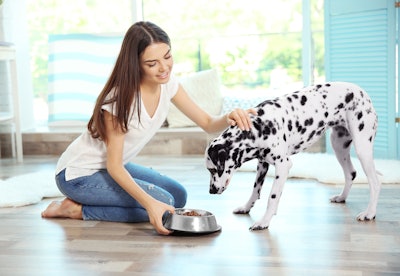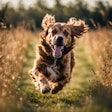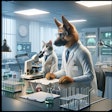
Ingrid Chu, vice president of research and insights at American Pet Products Association, spoke at Petfood Forum 2024 and shared insights for the pet food and pet care markets from the company’s National Pet Owner Survey (NPOS).
The survey provided valuable information about how the industry has trended before and after the COVID-19 pandemic.
“So, what we collected was that 63% of U.S. households have pets,” said Chu. “And working with one of the industry experts we were able to identify that the pet industry supplied $303 billion into the economy.”
The NPOS concluded that pet spending remains high and strong with an 8.8% CAGR from 2018 to 2024, while the CAGR from 2009 to 2017 was 5.7%. It is forecasted to show a solid year-over-year growth through 2030.
“We also took a look at all of the fast-moving consumer goods, where does pet spending fall?” said Chu. “What we saw is that pet care is at the top. People are spending more money on pet care over any other fast-moving consumer good.”
Now and before COVID, pet care is consistently performing above average and on top of the fast-moving consumer goods (FMCG) category.
Pet ownership levels are stabilizing post-pandemic
According to the data, in 2010 about 62% of households owned a pet, this percentage grew exponentially during the pandemic and has slowed to about 63% in 2024.
But the overall number of pet-owning U.S. households has increased steadily over time. In 2010 it was estimated that 46 million households owned a dog, 39 million a cat. In 2024 those numbers have increased slightly, 58 million for dogs and 40 million for cats.
Multi-pet household numbers are falling back to pre-pandemic levels, with many pet owners being asked to return to work in the office.
“It’s not a decline, it’s that things are going back to what we would normally see in trending data,” said Chu.
Pet owners are growing more emotional and attached to their pets. Previous pet owners are choosing not to add another pet to their family after losing one for emotional reasons, and less for lifestyle and financial reasons.
Millennials continue to own more pets than any other generation with Gen Z quickly catching up.
Gen Z is the only generation that is showing growth in pet ownership, according to Chu.
Spending habits have changed after COVID years
Most pet owners are essentially spending the same post-COVID, but there was a boost in those who spent less in 2024 than in both 2020 and 2022.
Dog and cat owners spend the largest share of their money annually on veterinary care, pet products and food.
Brick-and-mortar and online dominate pet related shopping.
Browsing in-store for pet products dropped in 2020 due to lockdowns but has begun to bounce back after the pandemic almost returning to pre-pandemic levels.
Gen Z and Millennials are using social media most for pet related shopping and recommendations. Pet company websites and Facebook are the main source for learning about new products, but Tik Tok is catching up quickly. Other all visual social media platforms such as YouTube and Instagram are also popular among the younger generations.
Gen Z accounted for an increased number of pet products purchased online over the past year, while older generations still prefer shopping at brick-and-mortar stores.
More about the National Pet Owner Survey (NPOS)
To assess current pet ownership in the U.S., the sample was based off gender, age, region, race/ethnicity, income and household size. A few of the respondent qualifications included being at least 18 or older, nationally represented to current U.S. Census statistics and must own a pet from the following categories: dogs, cats, saltwater and freshwater fish, reptiles, horses, small animals and birds.
The NPOS was conducted in two parts. First, a screener and second, a detailed pet owner module. There were eight different modules pertaining to the type of animal the pet owner owned. A total of 10, 156 pet owners completed the survey.


















